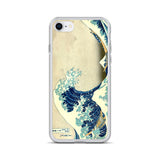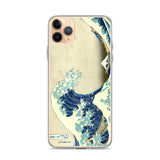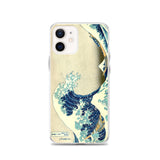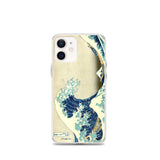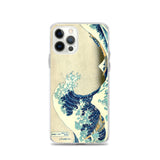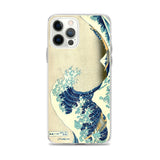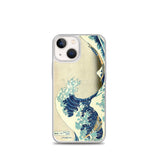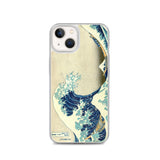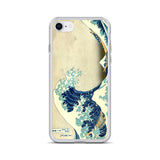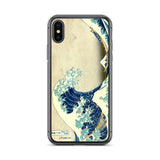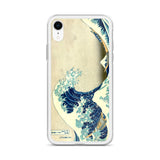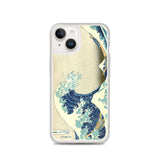'The Great Wave Off Kanagawa' by Katsushika Hokusai, ca. 1830, also known as 'The Great Wave'. From the series 'Thirty-Six Views of Mount Fuji'. Description and product details below. This image is also available on:
T-Shirts, T-Shirts (no background)
Hoodies, Hoodies (no background)
Perhaps the most famous example of Japanese art, 'The Great Wave Off Kanagawa' was created by the undisputed master of ukiyo-e printing, Hokusai, around 1830, for his series 'Thirty-Six Views of Mount Fuji'. Although Mount Fuji is visible in the background of the picture the main focus, as in most of the scenes from the series, is on the framing. In this scene Hokusai shows a massive wave in Sagami Bay rising up into the stormy sky, looking almost as if it's about to swallow not only the boats below but Mount Fuji itself. The boats shown are oshiokuri, transporting fish to the markets of Edo (Tokyo); Hokusai captures perfectly the terror they had to face as they passed under the frothing claws of the mountainous sea.
By his own account, Hokusai learned to paint when he was six years old, and he was around seventy years old in 1830. When Hokusai's career began the ukiyo-e genre was almost exclusively focused on portraiture, and it took many years for Hokusai to convince the public of the beauty of landscapes and nature scenes. Precursors with similar composition to 'The Great Wave' date from as early as 1803, when Hokusai was just starting to become famous. The 'Thirty-Six Views of Mount Fuji', and this scene in particular, represents the culmination of decades of development in Hokusai's style, and has been immensely popular from it's first release to the present day.
Ukiyo-e was a style of print art that developed in the late 17th century out of Japan's literary industry, which used woodblock printing as a substitute for moveable type for Japan's intricate cursive script. For ukiyo-e, the artist would would paint their design onto paper, and then give it to a wood carver, who would paste the paper onto a block of cherry wood and carve out the lines. The woodblock would then be given to printers, who would ink the raised parts of the block and press paper down on it to create the prints. At first monochrome, multicolor techniques were developed in the mid-18th century. Some of the first truly mass-produced art ever made, it was popular at all levels of Japanese society, and even the poorest could have an artistic masterpiece in their home, sometimes for as little as the price of a bowl of noodles. The '-e' suffix means 'picture', while 'ukiyo' means literally 'floating world', in the sense of 'passing' or 'ephemeral', and is a homophone of (and a play on) an ancient Buddhist term meaning 'this world of sorrow and grief'. The term and the Buddhist symbolism behind it refers to the original focus of the genre: actors, courtesans, and other entertainers living a highly insecure and rootless lifestyle. However, it also reflects the process of production: like a Buddhist mandala, ukiyo paintings were created to be destroyed, as the originals never survived the process of carving the woodblock.
Product Details:
iPhone Case, available for 21 different variants
FREE SHIPPING
Average Delivery Time: 7 - 11 working days
• Solid polycarbonate back
• Flexible, see-through polyurethane sides
• .5 mm raised bezel
• Precisely aligned port openings
• Easy to take on and off
• Wireless charging compatible






















